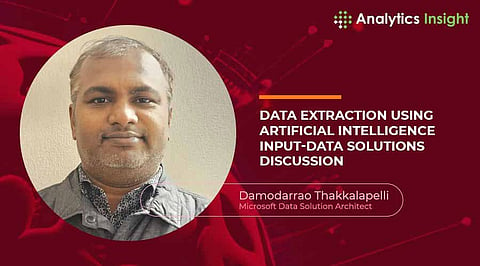

Damodarrao Thakkalapelli is passionate about solving enterprise data architecture problems and ensuring customers achieve their desired business outcomes. He designed comprehensive solutions as a solution architect, considering a variety of elements like hardware, software, network infrastructure, and data management systems.
As a Data Architect, he assesses many technological possibilities and decides wisely based on compatibility, cost, and best practices in the industry. He oversees the implementation process, directs development teams, and manages technical issues. He also makes recommendations for the technologies that are most appropriate for the organization's long-term strategy. He ensures the implemented solution adheres to the design principles, meets quality standards, and fulfils business requirements.
As an Architect he always investigates, identifies, and assesses risks associated with the solution, such as security vulnerabilities, data privacy concerns, and performance bottlenecks. He develops strategies to mitigate risks and ensure the solution's reliability and robustness. He continuously evaluates the implemented solution, gathers feedback, and identifies areas for improvement. He stays updated with emerging technologies, industry trends, and best practices, incorporating them into future solution designs.
We noticed one of his US patents published recently in Research gate which is impressive and may change the future of data loading process based on Artificial intelligence Input. Here are the high-level details from his patent.
Migrating databases between servers corresponding to different network database applications may be a resource intensive process, both in terms of manpower, time, and computing resources. During the migration process, an enterprise organization may need to parallelly maintain production and development servers for each of the network database applications. Using parallel servers may result in inefficiencies for the enterprise organization. For example, monitoring may need to be done parallelly in both the existing servers and the new servers (e.g., for performance validation of databases migrated to new servers). Further, development processes may need to be completed in the previous server prior to migration of databases to the new server. Separate teams may need to be maintained for each of the servers while the migration is underway and for determining whether the migration to the new servers is successful and beneficial. Further, it may only be possible to determine the performance of the databases in the new server once all the databases have been migrated to the new server.
Join our WhatsApp Channel to get the latest news, exclusives and videos on WhatsApp
_____________
Disclaimer: Analytics Insight does not provide financial advice or guidance. Also note that the cryptocurrencies mentioned/listed on the website could potentially be scams, i.e. designed to induce you to invest financial resources that may be lost forever and not be recoverable once investments are made. You are responsible for conducting your own research (DYOR) before making any investments. Read more here.
